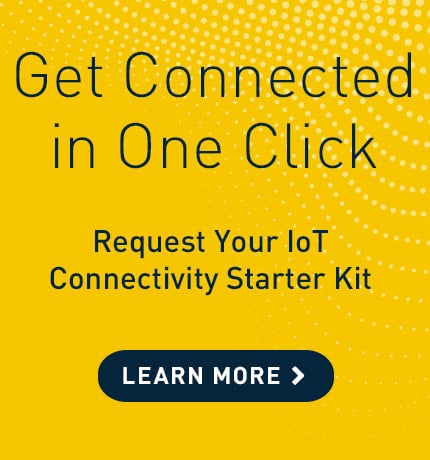Why You Should Be Using Module-Embedded SIM Technology

The ways we connect to our world are rapidly evolving. Technological capabilities are driving us beyond manual human-to-machine communication. The Internet of Things (IoT) enables devices to recognize, anticipate and react to users’ needs without pushing a button. Current estimates say the number of connected IoT devices is likely to reach?30.9 billion by 2025, up from the 13.8 billion expected in 2021.?
Using Traditional SIM Cards
Traditional SIM cards are widely employed in IoT devices. However, they are no longer the most effective technology for cellular-connected things in general. These devices come in various forms with an array of implementation options and connectivity needs over their lifetime.??
Traditional SIMs must be changed if:?
- You switch your connectivity profile for a better mobile network operator (MNO) for coverage, technology, prices or having an “insurance mode”??
- You are deploying your IoT devices globally and have unique localization requirements??
- You need to avoid roaming restrictions
- You want to streamline SIM management logistics and move away from complex physical SIM management?
- You need to improve service quality
How Is eSIM Technology Changing the Game?

If you have IoT-enabled sensors installed in difficult-to-access locations, paying a field technician to change a SIM card becomes inconvenient and costly.
The evolving embedded SIM (eSIM) technology represents a significant step forward in overcoming this challenge. Embedded Universal Integrated Circuit Card (eUICC) combined with multi-IMSI standards can increase IoT deployment speed and efficiency while reducing costs over your devices’ lifetime.
What Are the Differences between Module-Embedded SIM Technology with Telit NExTPlus??
It will take time before conventional SIM technology is fully phased out. Mobile devices still feature IoT-ready cards that transfer IoT data to upstream platforms and systems. eSIMs still consume more power than is ideal for ultralow-power applications. However, traditional SIMs still present clear limitations:
- The bulky form factors take up valuable space inside today’s ever-shrinking connected devices??
- They are another part item for manufacturers to deal with
- They require customization to work with a preselected MNO, depending on where the product is deployed??
Because eSIM technology improves on these shortcomings, it is expected to become more pervasive in the coming years.
4 Ways eSIMs Will Enhance IoT Deployments
With new rollouts, the technology will improve four major areas lacking in current SIM technology:?
1. Reduce Ordering and Manufacturing Costs?
With a SIM chip or an integrated UICC (iUICC)-hosted SIM, your mobile-connected products don’t need to be customized for their destination. Ordering, building in and testing MNO-specific SIM cards in the factory is no longer required, which lowers the bill of materials (BOM) and production costs.?
2. Real-Time Subscription Changes Enabled by Localizations over eUICC?
Never replace another SIM card again. Remote provisioning and zero-touch onboarding reduce the complexity of physically removing and replacing single-profile SIM cards in deployed IoT devices. Instead, you can remotely change the network carrier profile for your device over the air and securely from the cloud. This capability means you have one global SIM for your IoT device life cycle. This future-proof global IoT connectivity keeps your solutions more flexible and sustainable.???
3. Constant, Consistent Security?
IoT security vulnerability is a major concern for most undergoing digital transformation, especially regarding cyberattacks. Advanced module-embedded SIM technology alongside the Telit NExTPlus eUICC solution employs cybersecurity technology. This security covers the entire life cycle, from MNO provisioning to manufacturing and end-point provisioning.?
4. Eliminate Costly Truck Rolls?
Once your connected product is deployed, you don’t need to worry about sending a technician to change SIM cards. Eliminating costly truck rolls can save up to $160 per device.?
Access eSIM Technology with Telit?
Telit has connected over 200 million devices from 7,000 customers worldwide. We deliver connectivity and management capabilities with our comprehensive portfolio of IoT modules, connectivity services and platforms. Whether you want to displace SIM cards in your current IoT offers or forge your path into the future with Telit NExTPlus eSIM technology, we are here to help.?
Editor’s Note: This blog was originally published on 16 March 2018 and has since been updated.?
